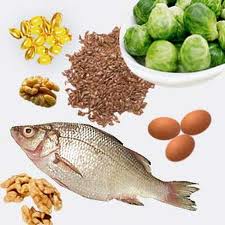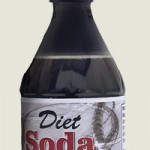Fats?!
“Stay away from fats”, “Only low fat please”, “Fats are bad for you…”
You’ve heard these phrases, but is there a reason to really be that paranoid? The name itself will scare many folks, mostly because of the fact that for a while now fats have been the subject of health scare campaigns. Ever since there’s been a surge in advertisements claiming fats bring certain death (exaggeration), they’ve received a very bad reputation. Let’s dive into why that’s not the case. To start off, they cannot be defined by lumping them into one general category of “fats”. There are different categories that exist, and we’re here to examine them and show you why they don’t all spell doom.
Let’s begin our examination by taking a look at the fats that actually are, our enemy. The fats that, indeed, are bad for you. You might know them by another name…Saturated Fats. In the science world, Saturated Fats are characterized as carbon atoms which are saturated by hydrogen atoms. Not really important to know for you and me, right? So let’s skip past the actual definition and get straight to the point of why they’re harmful. Saturated Fats are the fats which give rise to cholesterol levels in your blood. Put simply, having high cholesterol increases your risk of heart diseases. Besides Saturated Fat, there’s also another harmful fat that should be avoided, and they’re called Trans Fats. Trans fats do the same amount of damage Saturated Fats do by increasing your bad cholestrol (LDL) and lowering your good cholesterol (HDL). This increases your chances of getting many heart diseases, such as Atherosclerosis, or, a heart attack.
Switching the page, we now turn to the fats that are good for you (yes, they do exist). Polyunsaturated Fats and Monounsaturated Fats are the good fats (don’t worry about the difference between the two, they’re both useful) which benefit your health if eaten in moderate proportions (as is the case with everything). They’re also good for another rather simple reason, eat more of these to replace more of the bad (Saturated Fats). Unlike the Saturated Fats, Polyunsaturated Fats actually help reduce the cholesterol levels in your blood, which in turn, help decrease your chances of getting heart diseases.
Cholesterol levels are measured in HDL (high density lipoprotein) and LDL (low density lipoprotein). High HDL levels are a sign of good health while high levels of LPL increase chances of heart disease. Saturated and Trans Fats increase LPL levels, while the Polyunsaturated and Monounsaturated Fats increase your HDL levels (good to know, right?).
Now, armed with the basic understanding that there are indeed different types of fats that serve your body in different ways, let’s move on to the foods that are high in each. Examples of foods that contain Saturated Fats are fatty beef, lamb, pork, poultry with skin, beef fat, lard, cream, butter, cheese and other dairy products made from whole or reduced-fat (2 percent) milk. Now, now…just because they contain them doesn’t mean they need to be tossed into the trash bin or avoided. Just be sure that these aren’t the staple of your every day meals, as over time you risk problems if these are the basis of your diet.
In addition, there are many baked goods and fried foods that contain high levels of saturated fats. Examples of Trans Fats include; french fries and doughnuts, baked goods including pastries, pie crusts, biscuits, pizza dough, cookies, crackers, and stick margarines. Again, doesn’t mean you can’t eat french fries or enjoy some cookies, but make sure they don’t make up a large portion of your daily food menu.
Returning to the fats that do play a positive role in enhancing our bodies, we move to examples of Polyunsaturated Fats. These foods include; vegetable oils (such as soybean oil), corn oil and safflower oil, as well as fatty fish such as salmon, mackerel, herring and trout. Other sources include nuts (such as walnuts) and seeds (such as sunflower seeds). In other words, snacking on almonds or enjoying some peanut butter is a much better alternative than focusing on pastries. Who would’ve thought, right?
Just remember, there’s good and there’s bad. Enjoy the good, toss the bad (at least most of the time). Variety is key, so indulge but remember that when someone mentions “fats” you don’t have to go screaming for the door. They are not all bad for you, knowing the difference will come a long way in keeping you healthier and more fit. For a general discussion of some healthy foods you can eat, check out our Healthy Foods to Eat To Lose Weight article. Good Luck!








9 Comments »